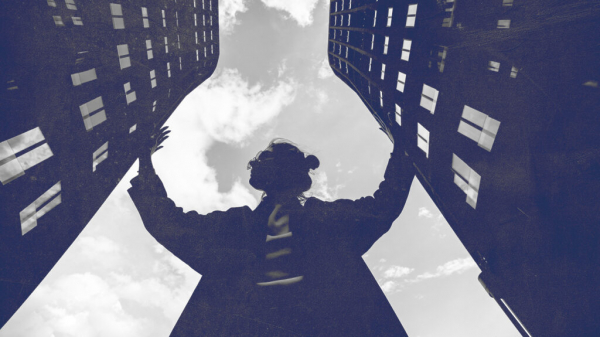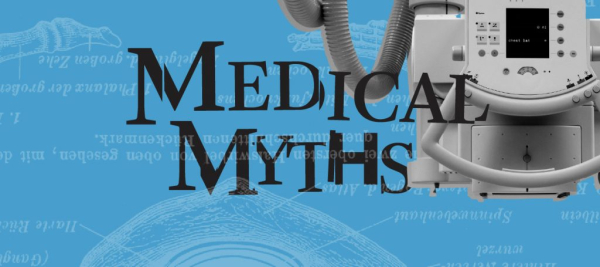Site uses cookies.
Learn moreThe heart: All you need to know
15 August 2022

Here, learn about the structure of the heart, what each part does, and how it…
The human heart is a finely-tuned instrument that serves the whole body. It is a muscular organ around the size of a closed fist, and it sits in the chest, slightly to the left of center.
The heart beats around 100,000 times a day, pumping approximately 8 pints of blood throughout the body 24/7. This delivers oxygen- and nutrient-rich blood to tissues and organs and carries away waste.
The heart sends deoxygenated blood to the lungs, where the blood loads up with oxygen and unloads carbon dioxide, a waste product of metabolism.
Together, the heart, blood, and blood vessels — arteries, capillaries, and veins — make up the circulatory system.
In this article, we explore the structure of the heart, how it pumps blood around the body, and the electrical system that controls it.
Anatomy of the heart
The heart consists of four chambers:
The atria: These are the two upper chambers, which receive blood.
The ventricles: These are the two lower chambers, which discharge blood.
A wall of tissue called the septum separates the left and right atria and the left and right ventricle. Valves separate the atria from the ventricles.
The heart’s walls consist of three layers of tissue:
Myocardium: This is the muscular tissue of the heart.
Endocardium: This tissue lines the inside of the heart and protects the valves and chambers.
Pericardium: This is a thin protective coating that surrounds the other parts.
Epicardium: This protective layer consists mostly of connective tissue and forms the innermost layer of the pericardium.
How the heart works
The rate at which the heart contracts depends on many factors, such as:
- activity and exercise
- emotional factors
- some medical conditions
- a fever
- some medications
- dehydration
At rest, the heart might beat around 60 times each minute. But this can increase to 100 beats per minute (bpm) or more.
Left and right sides
The left and right sides of the heart work in unison. The atria and ventricles contract and relax in turn, producing a rhythmic heartbeat.
Right side
The right side of the heart receives deoxygenated blood and sends it to the lungs.
The right atrium receives deoxygenated blood from the body through veins called the superior and inferior vena cava. These are the largest veins in the body.
The right atrium contracts, and blood passes to the right ventricle.
Once the right ventricle is full, it contracts and pumps the blood to the lungs via the pulmonary artery. In the lungs, the blood picks up oxygen and offloads carbon dioxide.
Left side
The left side of the heart receives blood from the lungs and pumps it to the rest of the body.
Newly oxygenated blood returns to the left atrium via the pulmonary veins.
The left atrium contracts, pushing the blood into the left ventricle.
Once the left ventricle is full, it contracts and pushes the blood back out to the body via the aorta.
Diastole, systole, and blood pressure
Each heartbeat has two parts:
Diastole: The ventricles relax and fill with blood as the atria contract, emptying all blood into the ventricles.
Systole: The ventricles contract and pump blood out of the heart as the atria relax, filling with blood again.
When a person takes their blood pressure, the machine will give a high and a low number. The high number is the systolic blood pressure, and the lower number is the diastolic blood pressure.
Systolic pressure: This shows how much pressure the blood creates against the artery walls during systole.
Diastolic pressure: This shows how much pressure is in the arteries during diastole.
Gas exchange
When blood travels through the pulmonary artery to the lungs, it passes through tiny capillaries that connect on the surface of the lung’s air sacs, called the alveoli.
The body’s cells need oxygen to function, and they produce carbon dioxide as a waste product. The heart enables the body to eliminate the unwanted carbon dioxide.
Oxygen enters the blood and carbon dioxide leaves it through the capillaries of the alveoli.
The coronary arteries on the surface of the heart supply oxygenated blood to the heart muscle.
Pulse
A person can feel their pulse at points where arteries pass close to the skin’s surface, such as on the wrist or neck. The pulse is the same as the heart rate. When you feel your pulse, you feel the rush of blood as the heart pumps it through the body.
A healthy pulse is usually 60–100 bpm, and what is normal can vary from person to person.
A very active person may have a pulse as low as 40 bpm. People with a larger body size tend to have a faster pulse, but it is not usually over 100 bpm.
Valves

The heart has four valves to ensure that blood only flows in one direction:
Aortic valve: This is between the left ventricle and the aorta.
Mitral valve: This is between the left atrium and the left ventricle.
Pulmonary valve: This is between the right ventricle and the pulmonary artery.
Tricuspid valve: This is between the right atrium and right ventricle.
Most people are familiar with the sound of the heart. In fact, the heart makes many types of sound, and doctors can distinguish these to monitor the health of the heart.
The opening and closing of the valves are key contributors to the sound of the heartbeat. If there is leaking or a blockage of the heart valves, it can create sounds called “murmurs.”
The heart’s electrical system
To pump blood throughout the body, the muscles of the heart must work together to squeeze the blood in the right direction, at the right time, and with the right force. Electrical impulses coordinate this activity.
The electrical signal begins at the sino-atrial node, sometimes called the sinus, or SA, node. This is the heart’s pacemaker, and it sits at the top of the right atrium. The signal causes the atria to contract, pushing blood down into the ventricles.
The electrical impulse then travels to an area of cells at the bottom of the right atrium, between the atria and ventricles, called the atrioventricular, or AV, node.
These cells act as a gatekeeper. They coordinate the signal so that the atria and ventricles do not contract at the same time. There needs to be a slight delay.
From here, the signal travels along fibers, called Purkinje fibers, within the ventricle walls. The fibers pass the impulse to the heart muscle, causing the ventricles to contract.
Blood vessels
There are three types of blood vessels:
Arteries: These carry oxygenated blood from the heart to the rest of the body. The arteries are strong, muscular, and stretchy, which helps push blood through the circulatory system, and they also help regulate blood pressure. The arteries branch into smaller vessels called arterioles.
Veins: These carry deoxygenated blood back to the heart, and they increase in size as they get closer to the heart. Veins have thinner walls than arteries.
Capillaries: These connect the smallest arteries to the smallest veins. They have very thin walls, which allow them to exchange compounds such as carbon dioxide, water, oxygen, waste, and nutrients with surrounding tissues.
The heart, blood, and blood vessels make up the circulatory, or cardiovascular, system.
Cardiac arrest: When the heart stops
The heart is essential to life — if it stops beating, blood will not reach the brain and other organs, and the person can die within minutes. This is called cardiac arrest.
If a person experiences cardiac arrest, they will be unable to speak or breathe, and they will have no heartbeat.
Anyone nearby should call 911 immediately and start cardiopulmonary resuscitation (CPR), pressing hard and fast with locked hands on the center of the person’s chest.
According to the Centers for Disease Control and Prevention (CDC), CPR can double or triple a person’s chance of survival after their heart stops.
Conclusion
The heart is an essential, powerful organ that constantly pumps oxygen and nutrients around the body.
If a person is born with congenital heart disease, or if damage occurs due to illness or other factors, the heart’s function may diminish, and this can lead to life threatening complications, such as heart failure.
If the heart stops, a person cannot survive for long. Staying active and maintaining a healthful diet are two ways to protect the heart.
Article Soucre: https://www.medicalnewstoday.com/articles/320565#anatomy



